APPOINTMENT OF STAFF AND VOLUNTEERS:
- A Safe and structured environment is encouraged at all material time
- Staff are trained, professional, supportive, committed, and youth-friendly
- Clear mission and goals will always be emphasized
- We will strive to encourage Connections to community and other youth-serving organizations
- Youths will be encouraged to participate and get involved at all levels of the organization, including but not limited to administration and the Board of Directors
DUTIES OF STAFFS AND VOLUNTEERS:
- Staff will be encouraged to be Physically and programmatically accessible at all times
- Staff are aware, willing, prepared, and supported to make accommodations
- Staffs must have knowledge of resources (national and community-specific) for youth with disabilities
- Build Partnerships and collaboration with other agencies serving or assisting youth with disabilities
- Focus on each young person’s individual needs, assets, and interests
- Hands-on experiential and varied activities are highly recommended; Hands-on involvement at all programmatic levels such as planning, budgeting, implementing, and evaluating programs are also encouraged.
- Youth involvement in developing and implementing activities
- Opportunities for success; multiple opportunities to develop and practice leadership skills should be exercised.
- Youth leadership Varied; therefore progressive leadership roles for youth: small group, large group, event, program must be developed
- Opportunities to try new roles in Mentoring and role models; Ensure peer and adult role models and mentors include people with disabilities
- Personal responsibility; Self-advocacy skills building
- Independent living information and assessment (career, employment, training, education, transportation, recreation, community resources, life skills, financial, benefits planning) must be implemented
- Family involvement and support; helps to assist Opportunities for youth to develop self-awareness, identity, and values
- Education on community and program values and history
- Disability history, law, culture, policies, and practices. Therefore it is the responsibility and duty of every staff to facilitate and develop the awareness of family and community members’ involvement.
The Youth Development And Implementation Programs Seek To Derive The End Result Of Safer And Productive Communities.
Due to the rise and sustainable crime rates in our communities, the streets have become increasingly dangerous from gangs and individual crimes and violence. We believe that this is due in part to a lack of alternative opportunities. We have seen and heard of thousands of homes and families in our communities, near and far that are experiencing an alarming rise in crime rates, which includes children from a tender age as low as five years to an escalating amount of youths in their twenties and thirties.
Our community is no exception which holds various patches of these surrounding areas, and a stone throw from our facility.
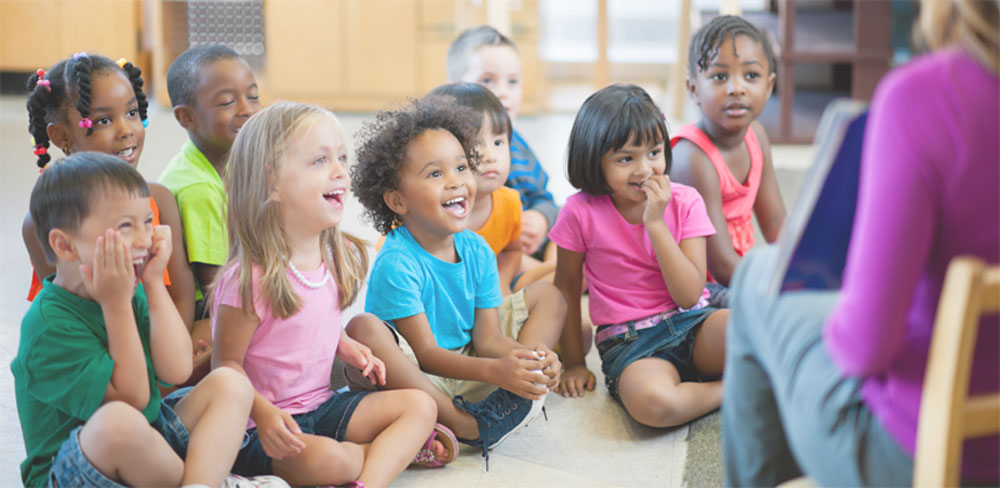
Our children and youths programs are geared to offer better alternative options than that of drugs, gangs and hopelessness which the life on the streets offer, instead we seek and have been offering a direct correlation between education, employment and crime reduction, which various researches have shown a proven positive outcome using such approach.
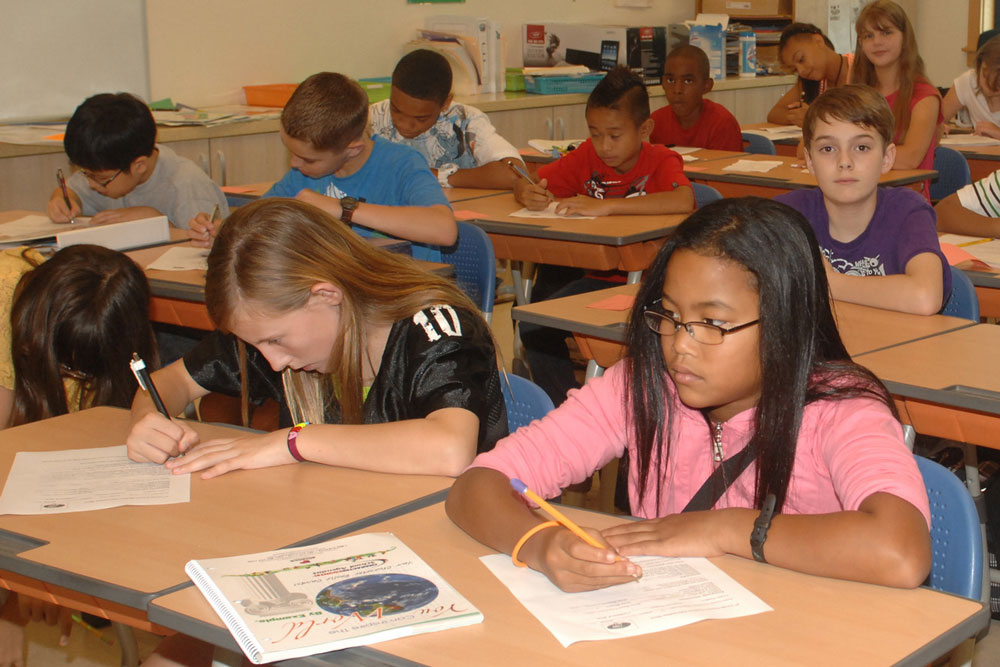
Our Youth Implementation and Development Programs is geared and focus on Empowering our youths, especially those that are at-risk. We have created an environment where the youths are nurtured and supported to bring about and promote Positive Self-Esteem, Economic Empowerment and in all other areas, such as disaster preparedness and life skills and training.
Some of the Areas that we have used and continue to use are the Five Focus Area Below:
Educational Skills:
- Continuing Education by Ensuring that children and young people achieve an education and complete their diploma to lead a successful and progressive life And Encourage Continued Education by making special efforts to Identify and Provide Scholarships to those who desire to pursue a Degree in Higher Education.
Job Skills:
- Provide and Sustain a continuous liaison between employers in our communities and those we have trained and prepared for employment through our various work programs and are considered to be viable and suitable candidates for their job positions.
- Youths are prepared for Employment through our one-and-one Mentoring Work Programs
Social Skills:
- Youths will be and have been Provided with recreational activities such as; Skating, Volleyball, Basketball, Retreats, Camps, Various Trips to Points of Interest and Interactive Programs to keep them engaged and off and from the life of the streets.
Survival Skills:
- We will promote and encourage various Counseling Sessions to assist our children and youths work through life challenges, setbacks and despairs.
- We will work with our Local Schools, Social Services, Other Agencies and Juvenile Centres to help children and youths navigate through dark times, even those contemplating suicide or other devastating and destructive means or thoughts of hurting themselves.
Life Skills:
The children and youths will develop the skills and awareness of alternatives to life in the streets and will become a positive contributor and a positive influence in the community.
They will also learn the skills and options which allow them to avoid the results of life in the street – prison, addiction, and death – and find true success.
Through our programs, Instructions and demonstrations about growth and development, sex, and sexuality though challenging will be provided through sample exercises to get the lessons started.
We will ensure a safe space where Educators will be invited and encouraged to provide an augment science-based program which will convey complete and accurate information on various reproductive and sexual health topics.
We believe that only through active participation and empowerment will youth be able to make safe, informed, and responsible decisions regarding their reproductive health and to contribute effectively to the programs.
We believe and have proven that teaching the skills of decision-making, assertiveness and goal-setting over the years to elementary school-aged and youths 12 to 18 and up, will lead to a more open, honest, and straightforward communication that can help young people make responsible and healthy choices that will lead to a productive dialogue between parents, teachers and youth group leaders can set the stage later in life to make the right choices when faced with decisions regarding drugs, sexual behavior sexuality, relationships, health, violence prevention, and community responsibilities such as skills-building, values, self-esteem, parenting, employment preparation, and reducing sexual risk
COMPREHENSIVE PRE-EMPTIVES FOR THE INITIATION OF THE PROGRAMS:
Who Am I and What Can I Do?
—Objectives are to:
1) become acquainted with other participants; 2) begin to feel comfortable as a member of the group; 3) become aware of one's positive qualities; 4) identify things about oneself that need to be changed; and 5) identify potential work skills and strengths.
What Are My Personal, Family, and Community Values?
—Objectives are to:
- understand the meaning of values; 2) identify personal, family, religious, and cultural values; 3) explore where values come from; 4) discover which values are most important personally; 5) examine the relationship between values and behavior; 6) practice communicating values to others; and 7) practice accepting the values of others.
How Well Do I Communicate with Others?
—Objectives are to:
1) learn what communication consists of; 2) understand how communication can affect feelings and relationships with family and friends and at school or work; 3) identify bridges and barriers to good communication; 4) practice good communication skills; and 5) define, give examples of, and practice assertive behavior.
What Are My Relationships with Others Like?
—Objectives are to:
learn which behaviors can enhance or destroy a relationship; 2) understand the nature of family relationships and what influences them; 3) identify qualities that develop and define friendship and romantic relationships; 4) explore community relationships and identify those that can serve as resources.
What Is Sexuality?
—Objectives are to:
- define sexuality as more than genital sexual activity; 2) learn what human sexuality is and how it affects our behavior; 3) become more comfortable talking and asking questions about sexuality; 4) review how male and female bodies develop and change during puberty; 5) discuss how feelings and relationships change during sexual development; 6) review how human reproduction occurs; 7) review and dispel myths about sexual activity and reproduction; 8) learn how to care of sexual and reproductive organs; and 9) learn about sexual orientation.
What Does Community Mean to Me?
—Objectives are to:
- define community and identify the people that make up one's community; 2) explore positive and negative elements in one's community; 3) identify the rights and responsibilities of membership in a community; 4) emphasize the importance of individual rights; 5) recognize how communities change and how people view those changes; 6) find ways to positively change one's community; and 7) learn about people in communities and their responsibilities and connections to one another.
What Are My Goals?
—Objectives are to:
1) learn what goals are and why goal-setting is important for life planning; 2) identify short-term and long-term goals; 3) learn and practice a process for setting goals and trying to achieve them; 4) explore personal and vocational life goals;
5) examine the importance of completing high school in life plans and goals; and 6) examine the probable impact of early parenthood on life plans and goals.
How Can I Make Good Decisions?
—Objectives are to:
1) identify various ways of making decisions and to examine their results; 2) learn about effective decision-making and the consequences of choices; 3) practice making difficult decisions; 4) practice predicting the consequences of various decisions; 5) apply effective decision-making to sexual decisions; and 6) practice resisting pressure to change a decision.
What Are Stereotypes and Gender Roles?
—Objectives are to:
- learn what stereotypes, prejudice, and discrimination mean; 2) examine stereotypes about gender and learn how stereotyping affects relationships; 3) practice critical thinking about media messages; 4) learn about, meet, and develop empathy for a variety of people; and 5) discuss personal experiences with discrimination.
What Does it Take to Be a Good Parent?
—Objectives are to:
- explore personal values and attitudes about parenthood; 2) learn about the challenges teenage parents face; 3) identify the qualities and resources needed for parenthood; 4) examine the financial costs of caring for an infant; and 5) evaluate personal readiness for parenthood.
Can I Keep Violence out of My Life?
—Objectives are to:
- learn when, where, and why violent acts are most likely to occur; 2) understand the relationship between anger and violence; 3) learn that angry feelings do not have to result in violent behavior; 4) identify appropriate responses to anger; 5) learn to negotiate compromise in conflict situations; 6) explore options to avoid violent or abusive situations; and 7) learn what date rape is, when it can occur, and how to prevent it.
How Can I Take Care of My Health?
—Objectives are to:
- define health and all its components; 2) identify risks to personal health; 3) review the elements of a nutritious diet and healthy ways of managing weight; 4) learn accurate information about tobacco, alcohol, and other drugs and their effects on health; 5) practice decision-making and assertiveness skills as they apply to avoiding use of alcohol and other drugs; 6) understand stress and learn stress management techniques; and 7) identify the signs of depression and suicide and to practice making appropriate responses to a depressed friend.
What Reduces Sexual Risks?
—Objectives are to:
- identify sexual behaviors that put one at risk for pregnancy and sexually transmitted diseases, including HIV/AIDS; 2) correct misinformation about unprotected sexual intercourse and its consequences; 3) learn basic facts about STD/HIV infection; 4) identify contraceptive methods that reduce the risk of pregnancy and STD/HIV infection; 5) develop increased understanding of and compassion for people with AIDS; and 6) practice skills needed to avoid sexual risk-taking.
How Do I Prepare for the World of Work?
—Objectives are to:
- explore job options; 2) examine the relationship between personal values and vocational choices; 3) examine the relationship between gender and vocational choices; 4) identify the education and training requirements for various jobs; 5) practice job-seeking skills; 6) learn how to be a good employee; and 7) understand the link between early parenthood and a vocational future.
End Of Term Evaluation
What Are Youth Development and Leadership & Why Are They Important?
Research supports the premise that both youth development and leadership programs positively shape the growth of young people with and without disabilities. Youth leadership programs build on solid youth development principles, with an emphasis on those development and program components that support youth leadership.
Often, and mistakenly, the terms “youth development” and “youth leadership” are used interchangeably. Youth development is a process that prepares young people to meet the challenges of adolescence and adulthood through a coordinated, progressive series of activities and experiences that help them to become socially, morally, emotionally, physically, and cognitively competent. Youth leadership is an important part of the youth development process. Youth leadership is both an internal and an external process leading to;
(1) The ability to guide or direct others on a course of action, influence their opinion and behavior, and show the way by going in advance; and
(2) The ability to analyze one’s own strengths and weaknesses, set personal and vocational goals, and have the self-esteem to carry them out.
Youth development experiences are connected to positive outcomes in youth, including decreases in negative behaviors (such as alcohol and tobacco use and violence) and increases in positive attitudes and behaviors (such as motivation, academic performance, self-esteem, problem-solving, positive health decisions, and interpersonal skills). Participation in leadership development experiences is linked to increased self-efficacy and the development of skills relevant to success in adulthood and the workplace such as decision-making and working well with others. Building self-advocacy and self-determination skills, an important aspect of leadership development for youth with disabilities, correlates with making a successful transition to adulthood.
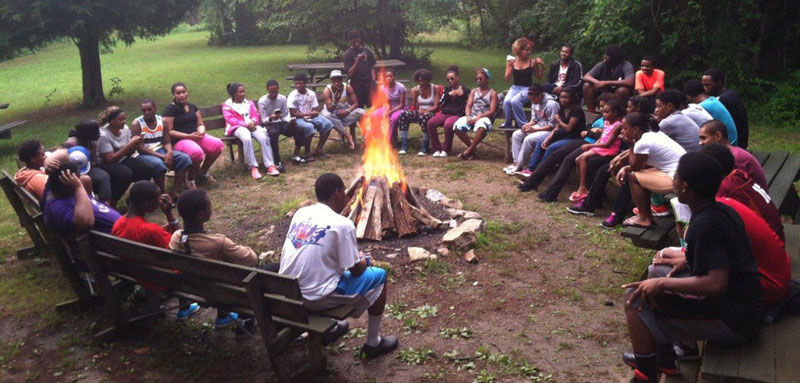
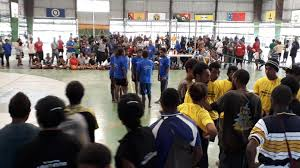
5 AREAS OF DEVELOPMENT WITH RELATED OUTCOMES AND ACTIVITIES
INTENDED YOUTH OUTCOMES SUGGESTED ACTIVITIES
1 WORKING
A) Completion of educational requirements or involvement in training that culminates in a specific vocation or opportunity for career advancement;
Mock job searches, including locating positions online and in the newspaper, “cold-calling,” preparing résumés, and writing cover letters and thank-you letters
B) Positive attitude about one’s ability and future in working in a particular industry or the opportunities to grow into another;
Career exploration activities including career interest assessment, job shadowing, job and career fairs, and workplace visits and tours
C) Established involvement in meaningful work that offers advancement, satisfaction, and self-sufficiency;
Learning activities using computers and other current workplace technology
D) Awareness of options for future employment, careers, and professional development;
Visits from representatives of specific industries to speak to youth about the employment opportunities and details of working within their industry
E) Meaningful engagement in own career development process;
Work experience, including summer employment
F) Demonstrated skill in work readiness
-Visits to education or training programs
-Information on entrepreneurship
-Job coaching or mentoring
-Career goal setting and planning
-Work readiness workshops
-Networking activities
-Internships
-Mock interviews
2 LEARNING
A) Appreciation of and the foundation for lifelong learning, including a desire for further training and education, the knowledge of needed resources for said training, and willingness for further planning
-Monitoring of and accountability for one’s own grades, and creation of a continuous improvement plan based on grades and goals
B) Basic aptitude in math and reading;
-Creation of a personal development plan
C) Ability to think critically toward a positive outcome;
-Identification of one’s learning styles, strengths, and challenges
D) Ability to determine one’s own skills and areas of academic weakness or need for further education and training;
-Contextualized learning activities such as service learning projects in which youth apply academic skills to community needs
E) Higher Learning Extra- Curricular & Remediation School: Teaching Computer Literacy Skills; Performing Arts; Creative Writing.
-Showcase of work that highlights one’s learning experience (such as an essay, a painting, an algebra exam, etc.)
F) Logical reasoning based on personal experience;
-Preparation classes for GED, SAT, or other standardized tests
G) Rational problem solving
-Initial and ongoing skills assessment, both formal and informal
H) Sense of creativity
-Group problem-solving activities
-Initial and ongoing career and vocational assessment, both formal and informal
-Peer tutoring activities that enhance the skills of the tutor and the student
-Development of a formal learning plan that includes long- and short-term goals and action steps
3 THRIVING
A) Developmentally appropriate exercise (will vary depending on age, maturity, and range of physical abilities)
-Social activities that offer opportunities to practice skills in communication, negotiation, and personal presentation
B) Confidence and sense of self-worth in relation to their own physical and mental status
-Role playing adverse situations and how to resolve them
C) Understanding of growth and development as both an objective and a personal indicator of physical and emotional maturation
-Training in conflict management and resolution concerning family, peer, and workplace relationships
D) Ability to identify situations of safety and make safe choices on a daily basis
-Community mapping to create a directory of resources related to physical and mental health
E) Ability to learn from adverse situations and avoid them in the future
-Workshops on benefits and consequences of various health, hygiene, and human development issues, including physical, sexual, and emotional development
F) Capacity to identify and avoid unduly risky conditions and activities Training in life skills
-Ability to assess situations and environments independently Personal and peer counseling
G) Knowledge and practice of good nutrition and hygiene
-Meal planning and preparation activities
-Sports and recreational activities
4 CONNECTING
A) Ability to network to develop personal and professional relationships
-Job and trade fairs to begin building a network of contacts in one’s career field of interest
B) Knowledge of and ability to seek out resources in the community
-Tutoring activities that engage youth as tutors or in being tutored
C) Sense of belonging and membership (such as valuing and being valued by others, being a part of a group or greater whole)
-Positive peer and group activities that build camaraderie, teamwork, and belonging
D) Sense of one’s own identity both apart from and in relation to others
-Role plays of interview and other workplace scenarios
E) Interpersonal skills, such as ability to build trust, handle conflict, value differences, listen actively, and communicate effectively with mentors
-Research activities identifying resources in the community to allow youth to practice conversation and investigation skills
F) Ability to empathize with others
-Mentoring activities that connect youth to adult
G) Quality relationships with adults and peers
-Letter writing to friends, family members, and pen pals
-Cultural activities that promote understanding and tolerance
YOUTH LEADERSHIP PROGRAM-SPECIFIC:
I) Ability to motivate others
-Contact with local leaders
II) Ability to communicate to get a point across
-Workshops in public speaking
III) Ability to seek out role models who have been leaders
-Research on historical or current leaders
IV) Ability to influence others
Ability to be a role model for others
-Strategic planning to change something in the community or within the youth program
5 LEADING
A) Awareness of how personal actions impact the larger communities
-Community volunteerism, such as organizing a park clean-up or building a playground
B) Ability to articulate personal values
-Personal plan development with goals, action steps, and deadlines
C) Respect and caring for oneself and others
-Participation in a debate on a local social issue
D) Integrity
-Learning activities or courses about leadership principles and styles
E) High expectations for self and community
-Resource mapping activities in which youth take the lead in planning and carrying out a search of community resources for youth
F) Ability to follow the lead of others when appropriate
-Training to be a peer mediator
G) Awareness of cultural differences among peers and the larger community
-Participation in a youth advisory committee of the city, school board, training center, or other relevant organization
H) Ability to engage in the community in a positive manner
-Participation in town hall meetings
I) Sense of responsibility to self and others
-Participation in a letter-writing campaign
J) Sense of purpose in goals and activities
-Voter registration and voting in local, state, and federal elections
YOUTH LEADERSHIP PROGRAM-SPECIFIC:
I) Ability to motivate others
-Mentoring relationships with positive role models
II) Ability to work with a team
-Group activities that promote collaboration and team work
III) Ability to share power and distribute tasks
-Opportunities to serve in leadership roles such as club officer, board member, team captain, or coach
IV)Ability to create and communicate a vision
-Opportunities to meet with local and state officials and legislators
V) Ability to resolve conflicts
-Mediation and conflict resolution training
VI) Ability to manage change and value continuous improvement
-Training in team dynamics
-Training in project management
ORGANIZATION AND PROGRAM COMPONENTS:
ORGANIZATIONAL LEVEL
COMPONENTS OF YOUTH DEVELOPMENT PROGRAMS (correlate the following)
A) Safe and structured environment
B) Staff are trained, professional, supportive, committed, and youth-friendly)
C) Clear mission and goals
D) Connections to community and other youth-serving organizations
ADDITIONAL COMPONENTS OF YOUTH LEADERSHIP PROGRAMS
A) Youth involvement at all levels, including administration and the Board of Directors
ADDITIONAL COMPONENTS FOR DISABILITY FOCUS
A) Physically and programmatically accessible
B) Staff are aware, willing, prepared, and supported to make accommodations
C) Knowledge of resources (national and community-specific) for youth with dis-abilities
D) Partnerships and collaboration with other agencies serving or assisting youth with disabilities
PROGRAMMATIC LEVEL
COMPONENTS OF YOUTH DEVELOPMENT PROGRAMS
- Focus on each young person’s individual needs, assets, and interests
- Hands-on experiential and varied activities
Youth involvement in developing and
implementing activities
- Opportunities for success
- Youth leadership
- Opportunities to try new roles
- Mentoring and role models
- Personal responsibility
- Family involvement and support
- Opportunities for youth to develop self-awareness, identity, and values
ADDITIONAL COMPONENTS OF YOUTH LEADERSHIP PROGRAMS
A) Hands-on involvement at all programmatic levels such as planning, budgeting, implementing, and evaluating programs
B) Multiple opportunities to develop and practice leadership skills
C) Varied, progressive leadership roles for youth: small group, large group, event, program
Education on community and program values and history
ADDITIONAL COMPONENTS FOR DISABILITY FOCUS
E) Ensure peer and adult role models and mentors include people with disabilities
F) Self-advocacy skills building
G) Independent living information and assessment (career, employment, training, education, transportation, recreation, community resources, life skills, financial, benefits planning)
H) Disability history, law, culture, policies, and practices
CONCLUSION
Few programs for youth include all of the youth development, youth leadership, and disability-related components necessary for youth to participate fully in all aspects of their lives and society. In order to serve all youth effectively, practitioners should connect to national resources as well as other youth-serving organizations in their own community to incorporate these components. The increasing recognition of the importance of youth development and leadership for all youth holds both promise and challenge.
To meet the challenge of ensuring that all youth, including youth with disabilities, have access to high quality programs focused on youth development and leadership, we are seeking to work with stakeholders at all levels of the workforce development, youth development, and disability fields to develop needed resources and materials for program practitioners and administrators, federal and provincial legislators, and youth and their families. The challenge is great, but the promise of better outcomes for youth is greater.

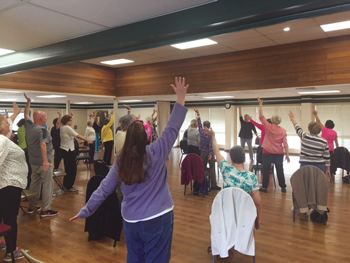
OUR OVERALL PROGRAMS AS MENTIONED EARLIER ARE:
- SENIORS CONNECTION OUTREACH: WE WILL TRANSPORT SENIORS TO INTERACT WITH OTHER SENIORS, ENGAGE IN ACTIVITIES HEALTH INITIATIVES, EXERCISE, NUTRITION, SAFETY MEASURES AND COMPUTER LITERACY.
- WOMEN IN DISTRESS; BIG SISTER OUTREACH: PROVIDE PHYSICAL AND MATERIAL SUPPORT FOR WOMEN IN DISTRESS, PREGNANT, RAPED OR ABUSED IN ANY WAY.
- YOUTH OUTREACH: DEVELOPING THE YOUTH TO THRIVE TO BECOME RESPONSIBLE AND PRODUCTIVE MEMBERS OF SOCIETY. OFFER SPECIALIZED PROGRAM WHICH INVOLVES MENTORING, COUNSELING, RECREATIONAL AND EDUCATIONAL ACTIVITIES, LIFE-SKILLS, FORMAL ETIQUETTE AND THE DEVELOPMENT OF A POSITIVE ATTITUDE TOWARD THEIR FUTURE.
- HIGHER LEARNING EXTRA-CURRICULAR AND REMEDIATION SCHOOL: TEACH COMPUTER SKILLS, PERFORMING ARTS, CREATIVE WRITING, EXTRA-CURRICULAR AND AFTER SCHOOL REMEDIATION PROGRAM.
- WE ASSIST NEWCOMERS IN DEVELOPING KNOWLEDGE AND SKILLS THAT LEAD TO INDEPENDENCE AND CONTRIBUTE TO COMMUNITY LIFE.
- OUR MEASURABLE INDICATOR(S) WILL DETERMINE THAT YOU HAVE BEEN SUCCESSFUL IN ACHIEVING THE ABOVE-DESCRIBED OUTCOME? THE INTEGRATION AND EASE BY WHICH THOSE COMING HAVE ADOPTED TO AND BECOME FAMILIAR WITH THEIR NEW CULTURE AND ENVIRONMENT.
- MORE FAVORABLE OVERALL PHYSICAL AND SOCIAL / EMOTIONAL HEALTH, AND FEWER ACTIVITY IMPAIRMENTS, TO IMPROVE QUALITY OF LIFE AND REDUCE THE BURDEN ASSOCIATED WITH DECLINING HEALTH AND FUNCTIONING AS THEY AGED.